 Introduction Use yoga props if you need to or want to. Yoga What? does not illustrate with props as we are keeping it simple. Yoga What? is intended to provide basic yoga This ebook has been written for current and future alignment tips and is not a yoga class or practice. yoga practitioners to help them feel safe and confident while practicing yoga. Proper alignment for your body and ability will allow you to concentrate on deepening and strengthening the poses safely. There is always a way to do yoga - Nancy Wadsworth This ebook is for you if yoga alignment is a bit confusing, needs clarification or is overwhelming.
Introduction Use yoga props if you need to or want to. Yoga What? does not illustrate with props as we are keeping it simple. Yoga What? is intended to provide basic yoga This ebook has been written for current and future alignment tips and is not a yoga class or practice. yoga practitioners to help them feel safe and confident while practicing yoga. Proper alignment for your body and ability will allow you to concentrate on deepening and strengthening the poses safely. There is always a way to do yoga - Nancy Wadsworth This ebook is for you if yoga alignment is a bit confusing, needs clarification or is overwhelming.
I hope you will see yourself on these pages. The models are my awesome yoga students ages 17 to 75 in all different levels of their practice. Listen to your body when practicing yoga. If anything feels tweaky or wrong in a joint or muscle attachment you should back off or come out of the pose immediately. You are the only one who knows how you feel. How To Use This Book Contents Basic yoga alignment is explained and illustrated through feet, hands, knees, legs, arms, hips, core, spine and neck using a few very common poses.
The pictures are specific to each Chapter and the instructions are specific to a body part. For example, when you see triangle (trikonasana) used to illustrate feet we will focus on alignment for the feet only in triangle. As you read further you will see other parts of the body also illustrated using triangle. This method breaks down the poses into comfortable and doable alignment. Each Chapter Section will have some text inbold typeface. The bold will correspond with theinstructions in the picture making the informationmore understandable.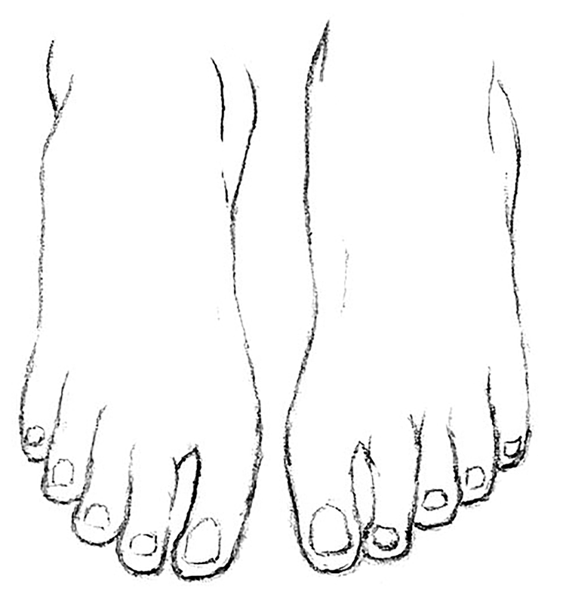 Chapter 1 Your Feet Plant your feet Feel the arch of eachfoot by using the four corners of yourfeet to root yourself The base of thebig toe is especially important to pressdown as it will keep your ankle in linewith your knee and hip Plant, press,root Keep toes from gripping
Chapter 1 Your Feet Plant your feet Feel the arch of eachfoot by using the four corners of yourfeet to root yourself The base of thebig toe is especially important to pressdown as it will keep your ankle in linewith your knee and hip Plant, press,root Keep toes from gripping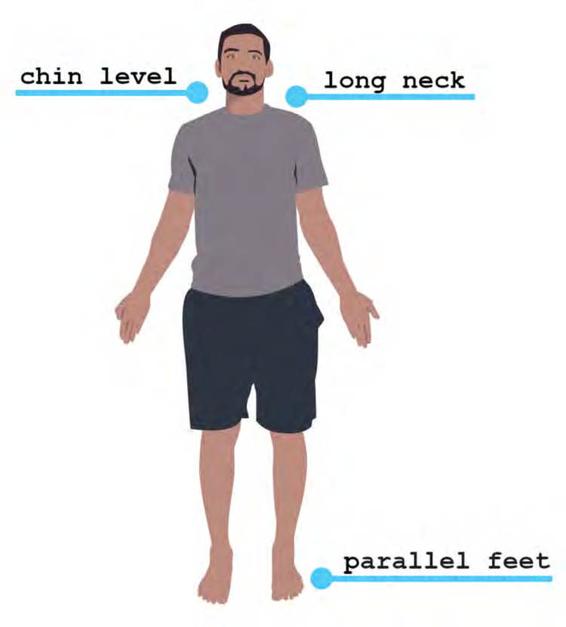 Section 1Mountain PoseTadasana. Feet can be together or hip distance apart and parallel to each other. Four corners of each foot are rooted lining up the ankles to the knees to the hips.
Section 1Mountain PoseTadasana. Feet can be together or hip distance apart and parallel to each other. Four corners of each foot are rooted lining up the ankles to the knees to the hips.
You will feel your lower belly slightly engage as you continue lining up your shoulders over hips and ears over shoulders. Chin is level to the floor and neck islong.Feet Section 2Standing Forward FoldUttanasana. Feet can be together or hip distance apart and parallel to each other. Four corners of each foot are rooted. As you fold forward from the hips arms can hang, hands can plant on the floor or you can clasp at the elbows. Bring your hips over heels lining up ankles,knees and hips. If your body is tight and you need knees bent please bend them keeping hips over heels. Feet
Section 2Standing Forward FoldUttanasana. Feet can be together or hip distance apart and parallel to each other. Four corners of each foot are rooted. As you fold forward from the hips arms can hang, hands can plant on the floor or you can clasp at the elbows. Bring your hips over heels lining up ankles,knees and hips. If your body is tight and you need knees bent please bend them keeping hips over heels. Feet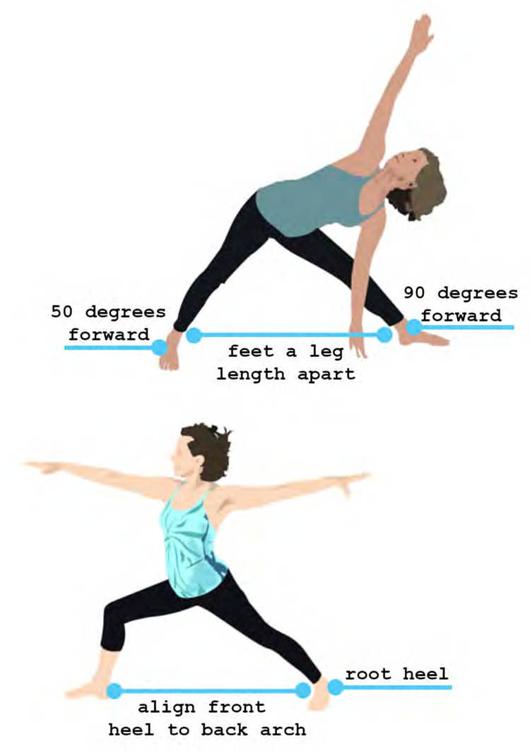 Section 3Triangle, Warrior IITrikonasana, Virabhadrasana II. , For both Triangle and Warrior II aim for feet being aleg length apart. Your front foot is facing 90 degreesforward with the back foot facing about 50 degreesforward. Feet
Section 3Triangle, Warrior IITrikonasana, Virabhadrasana II. , For both Triangle and Warrior II aim for feet being aleg length apart. Your front foot is facing 90 degreesforward with the back foot facing about 50 degreesforward. Feet Section 4 Warrior I Virabhadrasana I. Place feet a leg length apart with the front heel lined up with the back heel. Your front foot is facing 90 degrees forward with the back foot facing about 75 degrees forward. The back foot is turned in 75 degrees in order to protect the knee and so that you can face your hips forward. Feet
Section 4 Warrior I Virabhadrasana I. Place feet a leg length apart with the front heel lined up with the back heel. Your front foot is facing 90 degrees forward with the back foot facing about 75 degrees forward. The back foot is turned in 75 degrees in order to protect the knee and so that you can face your hips forward. Feet Section 4 Warrior I Virabhadrasana I. Place feet a leg length apart with the front heel lined up with the back heel. Your front foot is facing 90 degrees forward with the back foot facing about 75 degrees forward. The back foot is turned in 75 degrees in order to protect the knee and so that you can face your hips forward.
Section 4 Warrior I Virabhadrasana I. Place feet a leg length apart with the front heel lined up with the back heel. Your front foot is facing 90 degrees forward with the back foot facing about 75 degrees forward. The back foot is turned in 75 degrees in order to protect the knee and so that you can face your hips forward.
Both feet are planted with special attention to the base of the big front toe and the back heel being rooted. Feet Section 5Head to Knee, Seated Forward FoldJanu Sirsasana, Paschimottanasana. When seated with legs extended on the floor in front of you (one leg for Head to Knee) feet are flexedpressing through your heels and drawing the toes back toward your shins. Press through the base of the big toes to parallel the feet as if you are standing on them. Feet
Section 5Head to Knee, Seated Forward FoldJanu Sirsasana, Paschimottanasana. When seated with legs extended on the floor in front of you (one leg for Head to Knee) feet are flexedpressing through your heels and drawing the toes back toward your shins. Press through the base of the big toes to parallel the feet as if you are standing on them. Feet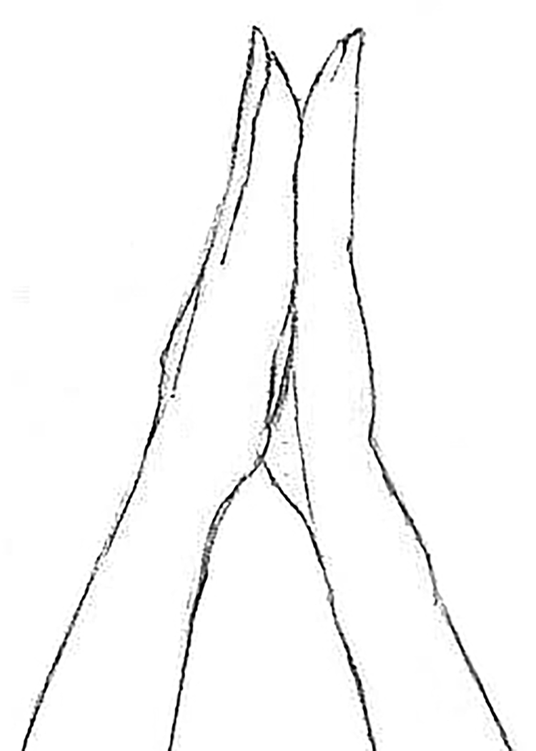 Chapter 2 Your Hands Hands are often the base of the pose andmust be aligned correctly for comfort ofthe wrists, shoulders, and neck.
Chapter 2 Your Hands Hands are often the base of the pose andmust be aligned correctly for comfort ofthe wrists, shoulders, and neck. Section 1Downward Facing DogAdho Mukha Svanasana. When planting your hands on the ground they must be a shoulders-width apart or a tiny bit wider with fingers fanned out. Wrists are parallel to each other keeping the pinch out of the inner wrist. Press down the base of each finger and pay attention to the base of the thumb pressing firmly as this action will help your shoulders. Hands
Section 1Downward Facing DogAdho Mukha Svanasana. When planting your hands on the ground they must be a shoulders-width apart or a tiny bit wider with fingers fanned out. Wrists are parallel to each other keeping the pinch out of the inner wrist. Press down the base of each finger and pay attention to the base of the thumb pressing firmly as this action will help your shoulders. Hands Section 2Upward Facing DogUrdvha Mukha Svanasana. When planting your hands on the ground they must be a shoulders width apart or a tiny bit wider with fingers fanned out. Hands
Section 2Upward Facing DogUrdvha Mukha Svanasana. When planting your hands on the ground they must be a shoulders width apart or a tiny bit wider with fingers fanned out. Hands Section 2Upward Facing DogUrdvha Mukha Svanasana. When planting your hands on the ground they must be a shoulders width apart or a tiny bit wider with fingers fanned out.
Section 2Upward Facing DogUrdvha Mukha Svanasana. When planting your hands on the ground they must be a shoulders width apart or a tiny bit wider with fingers fanned out.
Your wrists are parallel to each other keeping the pinch out of the inner wrist. Hips and legs are off of the floor with the tops of the feet pressing down strongly with knee caps lifted. Shoulders mustbe directly over wrists to avoid the backbend moving into the lower back and causing pain. Hands Section 3Upward HandsUrdhva Hastasana.
Section 3Upward HandsUrdhva Hastasana.
Next page
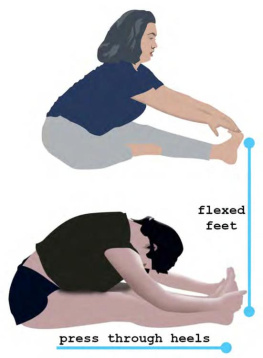

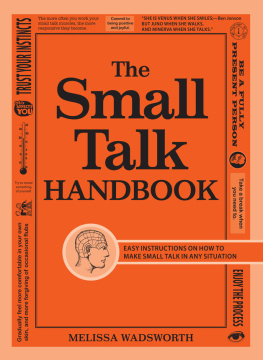

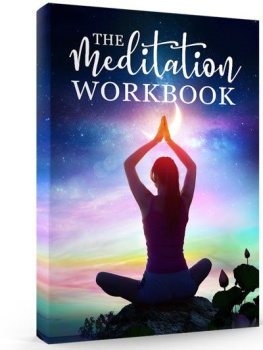
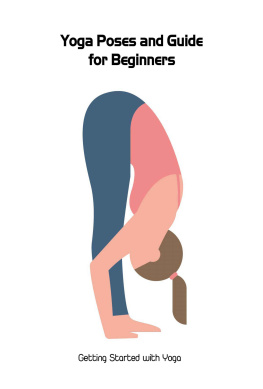
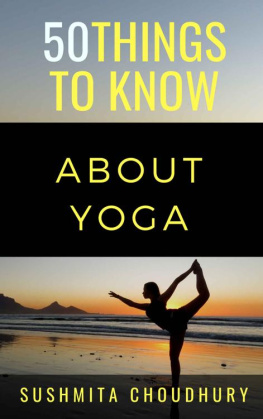
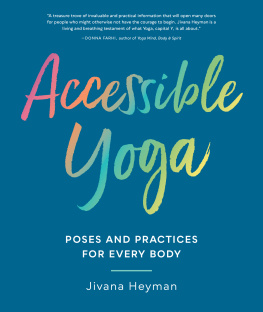
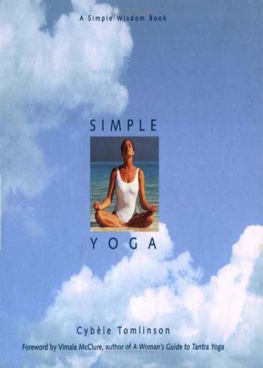
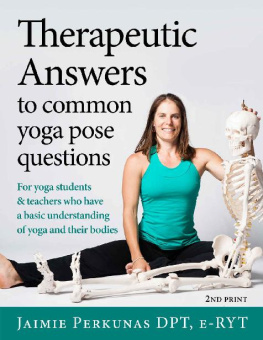

 Introduction Use yoga props if you need to or want to. Yoga What? does not illustrate with props as we are keeping it simple. Yoga What? is intended to provide basic yoga This ebook has been written for current and future alignment tips and is not a yoga class or practice. yoga practitioners to help them feel safe and confident while practicing yoga. Proper alignment for your body and ability will allow you to concentrate on deepening and strengthening the poses safely. There is always a way to do yoga - Nancy Wadsworth This ebook is for you if yoga alignment is a bit confusing, needs clarification or is overwhelming.
Introduction Use yoga props if you need to or want to. Yoga What? does not illustrate with props as we are keeping it simple. Yoga What? is intended to provide basic yoga This ebook has been written for current and future alignment tips and is not a yoga class or practice. yoga practitioners to help them feel safe and confident while practicing yoga. Proper alignment for your body and ability will allow you to concentrate on deepening and strengthening the poses safely. There is always a way to do yoga - Nancy Wadsworth This ebook is for you if yoga alignment is a bit confusing, needs clarification or is overwhelming. Chapter 1 Your Feet Plant your feet Feel the arch of eachfoot by using the four corners of yourfeet to root yourself The base of thebig toe is especially important to pressdown as it will keep your ankle in linewith your knee and hip Plant, press,root Keep toes from gripping
Chapter 1 Your Feet Plant your feet Feel the arch of eachfoot by using the four corners of yourfeet to root yourself The base of thebig toe is especially important to pressdown as it will keep your ankle in linewith your knee and hip Plant, press,root Keep toes from gripping Section 1Mountain PoseTadasana. Feet can be together or hip distance apart and parallel to each other. Four corners of each foot are rooted lining up the ankles to the knees to the hips.
Section 1Mountain PoseTadasana. Feet can be together or hip distance apart and parallel to each other. Four corners of each foot are rooted lining up the ankles to the knees to the hips. Section 2Standing Forward FoldUttanasana. Feet can be together or hip distance apart and parallel to each other. Four corners of each foot are rooted. As you fold forward from the hips arms can hang, hands can plant on the floor or you can clasp at the elbows. Bring your hips over heels lining up ankles,knees and hips. If your body is tight and you need knees bent please bend them keeping hips over heels. Feet
Section 2Standing Forward FoldUttanasana. Feet can be together or hip distance apart and parallel to each other. Four corners of each foot are rooted. As you fold forward from the hips arms can hang, hands can plant on the floor or you can clasp at the elbows. Bring your hips over heels lining up ankles,knees and hips. If your body is tight and you need knees bent please bend them keeping hips over heels. Feet Section 3Triangle, Warrior IITrikonasana, Virabhadrasana II. , For both Triangle and Warrior II aim for feet being aleg length apart. Your front foot is facing 90 degreesforward with the back foot facing about 50 degreesforward. Feet
Section 3Triangle, Warrior IITrikonasana, Virabhadrasana II. , For both Triangle and Warrior II aim for feet being aleg length apart. Your front foot is facing 90 degreesforward with the back foot facing about 50 degreesforward. Feet Section 4 Warrior I Virabhadrasana I. Place feet a leg length apart with the front heel lined up with the back heel. Your front foot is facing 90 degrees forward with the back foot facing about 75 degrees forward. The back foot is turned in 75 degrees in order to protect the knee and so that you can face your hips forward. Feet
Section 4 Warrior I Virabhadrasana I. Place feet a leg length apart with the front heel lined up with the back heel. Your front foot is facing 90 degrees forward with the back foot facing about 75 degrees forward. The back foot is turned in 75 degrees in order to protect the knee and so that you can face your hips forward. Feet Section 5Head to Knee, Seated Forward FoldJanu Sirsasana, Paschimottanasana. When seated with legs extended on the floor in front of you (one leg for Head to Knee) feet are flexedpressing through your heels and drawing the toes back toward your shins. Press through the base of the big toes to parallel the feet as if you are standing on them. Feet
Section 5Head to Knee, Seated Forward FoldJanu Sirsasana, Paschimottanasana. When seated with legs extended on the floor in front of you (one leg for Head to Knee) feet are flexedpressing through your heels and drawing the toes back toward your shins. Press through the base of the big toes to parallel the feet as if you are standing on them. Feet Chapter 2 Your Hands Hands are often the base of the pose andmust be aligned correctly for comfort ofthe wrists, shoulders, and neck.
Chapter 2 Your Hands Hands are often the base of the pose andmust be aligned correctly for comfort ofthe wrists, shoulders, and neck. Section 1Downward Facing DogAdho Mukha Svanasana. When planting your hands on the ground they must be a shoulders-width apart or a tiny bit wider with fingers fanned out. Wrists are parallel to each other keeping the pinch out of the inner wrist. Press down the base of each finger and pay attention to the base of the thumb pressing firmly as this action will help your shoulders. Hands
Section 1Downward Facing DogAdho Mukha Svanasana. When planting your hands on the ground they must be a shoulders-width apart or a tiny bit wider with fingers fanned out. Wrists are parallel to each other keeping the pinch out of the inner wrist. Press down the base of each finger and pay attention to the base of the thumb pressing firmly as this action will help your shoulders. Hands Section 2Upward Facing DogUrdvha Mukha Svanasana. When planting your hands on the ground they must be a shoulders width apart or a tiny bit wider with fingers fanned out. Hands
Section 2Upward Facing DogUrdvha Mukha Svanasana. When planting your hands on the ground they must be a shoulders width apart or a tiny bit wider with fingers fanned out. Hands Section 3Upward HandsUrdhva Hastasana.
Section 3Upward HandsUrdhva Hastasana.